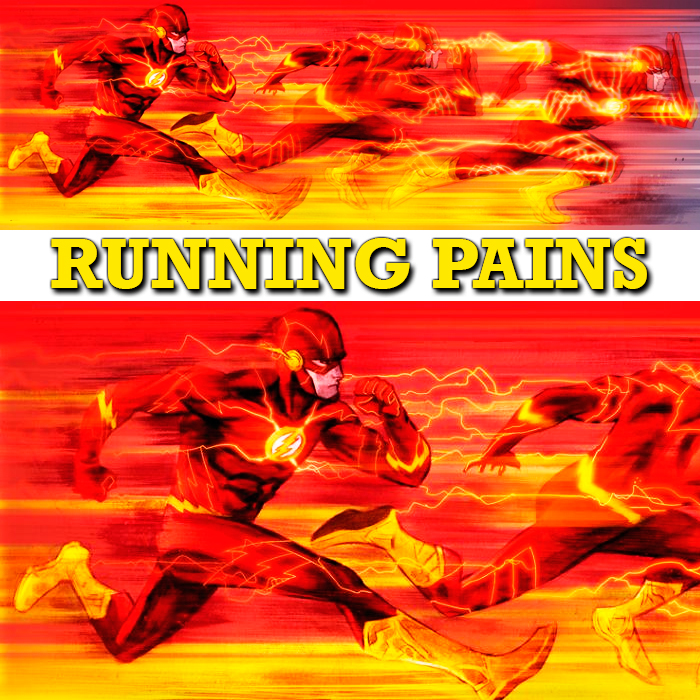Running Pains
I’ve been running at least 4 days a week now for the last 3 or so years and the number one thing I’ve learned is to deal with running pains.
You see, running pains accompany about 95% of all runs.
Be it a tight hamstring or a tweak in the calf, almost every run has some sort of discomfort associated with it…at least the first 3 or so minutes do anyways. But even after warming up something always seems to be a bit off.
Sometimes it’s side stitches, sometimes it’s a bad right knee, and yet other times it could be your traps, but, whatever it is, the point is DON’T STOP RUNNING…I don’t.
Why don’t I stop?
It’s not because I am one bad mama-jama’ or because I am one of the toughest guys around, it’s actually nothing of the sort.
I don’t stop running because I have learned to deal with running pains.
Running Pains vs. Running Injuries
First and foremost it is of utmost importance to note that running pains are not running injuries.
When I say “running pains” I am talking about slight tweaks in joints or muscles felt while on a run, not painful injuries that should have you sidelined anyways.
So, how do you know the difference?
Running Pain
What I am calling a “running pain” is something that, with an impromptu change, in your running form stops “hurting” almost immediately.
Running Injury
A running injury on the other hand is a pain that does not go away no matter what changes you make to your form nor how “warmed-up” you may be during a run.
So, no, I do not stop running while dealing with “running pains” because I am tough – it’s quite the opposite.
I don’t stop running because I have learned to tweak my running form on the go to stop the “running pains” before they become “running injuries.”
Using Running Pains To Help Prevent Running Injuries
Much like adjusting the way you are sitting because your leg is starting to fall asleep or because your lower back or neck is starting to hurt, running pains should be considered warning signs as you run.
BUT, unlike unconsciously adjusting ourselves when sitting, standing, or sleeping, when we are running most of us think a “running pain” is a perfectly good reason to stop running…or something that will stop hurting if we just muscle through the run. So, most of us keep running with no adjustments to our form and by the end of the run find ourselves with a new nagging “running pain.” A “running pain” which can, and will, eventually become a running injury if not properly addressed.
Addressing Running Pains
The time to address running pains is not after a run or even before the run. Most running pains happen during the run no matter how much pre-run or post-run training/recovery you have been doing.
So, the time to address running pains is DURING the run.
If your right knee is starting to hurt than adjust your form immediately! Don’t go the next 2 – 5 miles without making adjustments while just compounding the pain.
Remember that running is not about being tough, it’s about being smart….at least if you want to keep pounding the pavement that is.
Learning How To Deal With Running Pains
Over the last 3 years I have dealt with many a running pains and my share of running injuries. What I have learned is that there is a clear difference between the two.
For me at least, if it is an injury there is nothing I can do to alleviate the pain during the run. On the other hand, if it’s a simple pain, then a change in form seems to do the trick.
You see, because running pains vary on a day to day basis, every single run is a different experience no matter how many times you’ve run a route. This being the case, during every single run we should be paying close attention to that unique experience. We need to be attuned to how we feel and what our body is telling us each and every time we go out for a run.
The point is that if we want to continue hitting the pavement the next day we need to be smart about how we run. To go at it everyday, or even every other day, we need to start really listening and paying close attention to our bodies. This is especially true when it comes to running. Listen to your body so you can learn what it’s telling you…”don’t land on your heel – that hurts!”
Running Doesn’t Hurt – Poor Form Does
Running can put a lot of stress on a number of joints, ligaments, and muscles, but it doesn’t have to.
Good form and learning how to deal with running pains (i.e., adjusting your form on the fly) are key to staying healthy enough to run the next day.
So, start to get smart about how you run.
Listen to what your body is telling you and you’ll start to learn the early signs of running pains.
If you start to really listen to your body as you run adjusting your form mid-run will be as second nature as adjusting your sitting posture at your desk…which you do because of “sitting pains.”
By Rolando Rodriguez


